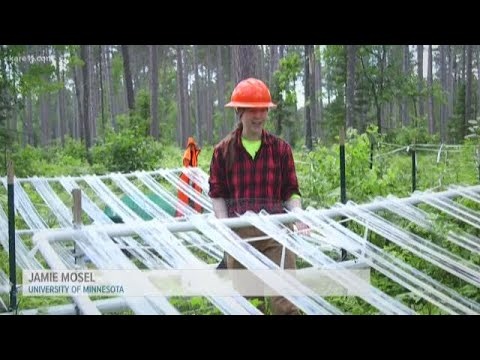

The landscape of Minnesota is changing as the climate crisis intensifies. Animals and plants that once were only found in the southern part of the state have moved north, suggesting that as the climate changes, Minnesota, by 2100, will start to resemble an environment similar to the one found in Kansas, a few states to the south.
“We have a perfectly good Kansas now. We don’t need a second one in Minnesota,” said Lee Frelich, the director of the University of Minnesota’s Center for Forest Ecology, to The Washington Post. He believes that if the climate crisis goes unchecked, the boreal forests that soak up huge amounts of carbon dioxide from the atmosphere could vanish completely, taking with them a third of the state’s native species of trees, flowers, birds and pollinators.
Frelich and a group of scientists are trying to understand exactly how the changing climate will affect Minnesota, what species will thrive, and are starting to plant trees that will one day take the place of the ones native to the state, according to The Washington Post.
Minnesota’s remarkable natural landscape, which includes boreal forests to the north, temperate forests in the middle, and prairie stretching to the south and west, has lost a tremendous amount of its biodiversity and wetlands to development, industry, and now a rapidly changing climate.
In the last 150 years, the state has lost 50 percent of its wetlands, 40 percent of its forests and 98 percent of its prairies, according to Hannah Texler, a plant ecologist with the Minnesota Department of Natural Resources, who has helped put together a comprehensive survey of the state’s biological diversity, as Minnesota Public Radio (MPR) reported.
“So that just underscores the importance of those areas we do have left,” she said to MPR. “It’s incumbent on us to make sure that we’re taking actions to make sure that those persist into the future.”
In the northeast corner of the state, scientists are planting an experimental forest under different climatic conditions. They have built ten, 30-foot tall, open-top chambers. Eight of those chambers are warmed from above and below ground. The other two are controls. Half of the chambers also have elevated levels of carbon dioxide, according to local NBC news affiliate KARE.
“It’s the only place on the planet that’s simulating climate change to the degree that we think it’s [actually] going to happen,” said Randy Kolka, a research scientist with the U.S. Department of Agriculture Forest Service, to KARE. “And it’s right here in northern Minnesota.”
In the moderate warming scenario, they have already seen effects just a few years into a 10-year experiment. When the climate warms four degrees Fahrenheit, the tamarack trees hold onto their needles much longer. In a more extreme scenario, where the temperature increases 16 degrees, shrubs proliferate, shielding and killing the moss essential to the peatland ecosystem, according to KARE.
“The trees are going downhill fast,” Kolka said. “The changes to the plant community are like the canary in the coal mine. Once you start seeing changes to the plant communities, you can expect to see bigger changes up the ecosystem scale.”
One of the bolder parts of the experimental forest is the planting of trees that once would not have been found here, but that are expected to flourish in the future that scientists foresee in Minnesota’s North Woods.
“The worst-case scenario is if we don’t do something like this, we’ll have no forest,” said Brian Palik, a longtime ecologist with the Forest Service’s Northern Research Station, to The Washington Post. “Our broad objective is to look at ways to keep forests on the landscape. It may be a different forest. I like to say that it may not be your grandfather’s forest, but it will be your grandchildren’s forest.”
“It’s not that this is going to happen. It’s that it’s already happening,” he added of the changes that the warming climate is bringing to the North Woods. “The time to act is now.”

 233k
233k  41k
41k  Subscribe
Subscribe 